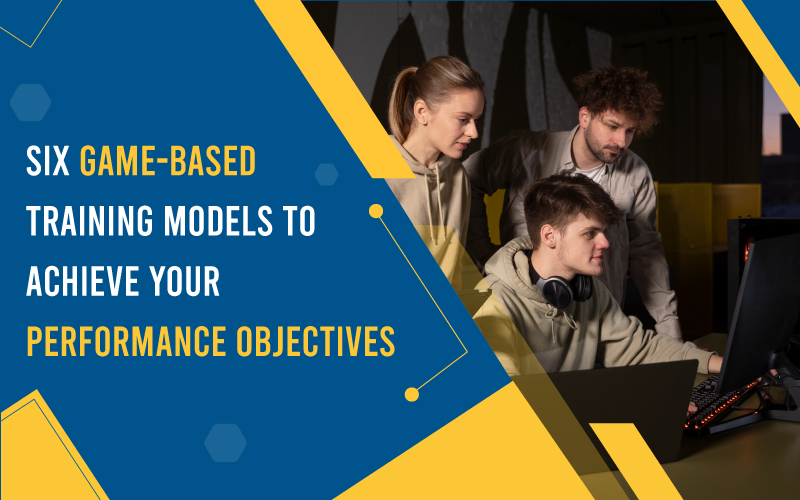Game-based training transforms traditional learning from a passive experience into an active one. Through play, points, badges, leaderboards, and rewards, users engage at a much higher level.
The study “A Meta-Analytic Examination of the Instructional Effectiveness of Computer-Based Simulation Games” found that simulation game-based training results in 20% higher self-efficiency, 9% greater retention, 11% greater declarative knowledge and 14% greater procedural knowledge than instructional training methods. Furthermore, a survey of 101 individuals, with the majority of participants between the ages of 25 to 54, found that 79% thought they would be more productive if their work were more game-like.
While these are impressive statistics, it’s important to remember that not all video games are created equal. There are dozens of game mechanics (branching, matching, identification, recall, etc.), each mapping to a set of performance objectives. Based on Bloom’s Taxonomy, a human cognition classification, the Taxonomy Alignment for Gaming was devised by Allen Interactions, an instructional design company, to align game mechanics with specific performance objectives—a framework we align our work with at ELB Learning.
The taxonomy is divided into six sections. The first includes recall and memorization games, which aid users in remembering certain topics. The second includes judgment games, which help learners understand concepts. The third includes consequence games, which work to apply the learner’s knowledge, and strategy games, which test analysis abilities. Finally, there are exploration games that improve evaluation skills and simulation games that help users learn creation skills.
When identifying the goals that your training should accomplish, it’s important to match them with the most suitable game mechanics to ensure the best results.
Memorization Games: Prove Knowledge
Retaining information is a key employable skill. Memorization games challenge users to describe their findings, write responses, name items, list matches, and identify similarities and differences. By mastering these actions, employees can retain knowledge for extended periods rather than recalling it for a short period. Memorization games align well with data-driven content (count, size, speed, temperature, volume, weight, etc.).
Judgment Games: Establish Comprehension
Managers want to measure where employees’ skill sets lie and where there is room for improvement. Judgment games challenge employees to explain choices, interpret data, compare answers, predict outcomes, select answers, and identify differences to find the correct answers to problems.
A classic judgment game is trivia, in which players must answer various questions with different answer formats. Judgment games align well with process training, such as operating machinery and workplace safety.
Consequence Games: Demonstrate Application
Employees, especially salespeople, need to know how to respond to questions and concerns when talking with key stakeholders. For example, if a doctor refuses to meet with a pharmaceutical rep, that rep must have the right tools to turn the situation around.
Consequence games often use branching storylines, sending players in different directions based on their choices. Players must apply learning concepts through cause-and-effect scenarios. These games are great for training employees in roles that require following scripted conversations. Consequence games motivate learners to solve problems, calculate decisions, prepare for different outcomes, and relate to others to change based on situations presented.
Strategy Games: Showcase Analysis
Some of the most successful employees can assess situations, make decisions, and affect their business without much oversight. Strategy games test and improve these skills through puzzles, challenges and solution-driven activities. Players are encouraged to make quick decisions and react to others’ decisions as well. They must find a pattern of play or a consistent strategy to outsmart their opponents.
In strategy games, players are asked to compare outcomes and prioritize tasks in order to differentiate between responsibilities and categorize solutions to problems. These games are regularly used for management training.
Exploration Games: Exhibit Decision Making
Exploration games challenge players to navigate a nonlinear branching path with multiple outcomes, each presented based on unique player decisions. This model is commonly followed in both classic and current games, from The Legend of Zelda: Tears of the Kingdom and GTA V to more recent titles like Elden Ring.
Exploration games reinforce learning concepts, reframe mindsets, evaluate and judge decisions and consequences, rank priorities, and predict outcomes. They align well with deep multi-story topics, such as cybersecurity (access control, data classification, strong passwords, phishing awareness, and other strategies to protect systems, data, and users from digital threats).
Simulation Games: Display Evaluation
Simulation games bring players into an immersive environment meant for free-roaming and collaboration with others. Players take on the identity of characters in the game and are presented with scenarios throughout. The Sims is one of the most popular games that uses this mechanic. Players design characters and lifestyles, formulate decisions, and prepare different outcomes. While there is no “win” per se, every player’s path can be unique and rewarding.
Simulation games offer a comprehensive practice playground for employees learning a variety of skills. They also provide trainers with more data than any other game mechanic, tracking employee knowledge and behavioral trends.
Games are remarkable tools for training, testing, and tracking employee knowledge and behavior, and they have modernized corporate training. Studies clearly show that game-based training enhances employee knowledge and retention. However, training games must be designed carefully to align with the learning content that companies want to bestow on their employees. The right marriage of instructional design and gameplay can make all the difference in achieving training goals.








